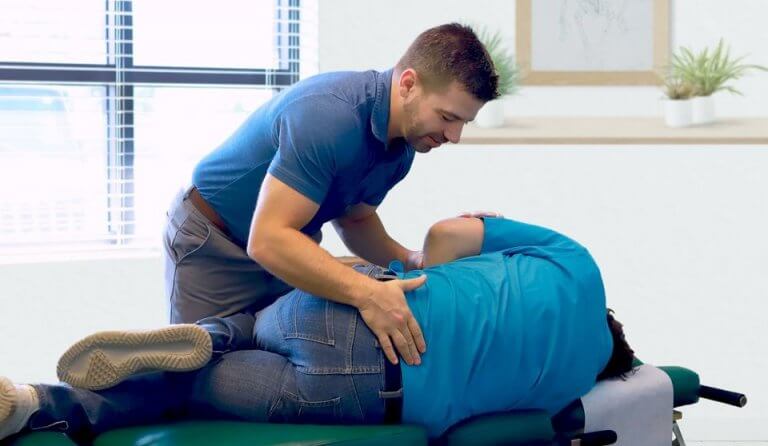Anything unfamiliar or unknown tends to be a little scary or unnerving.
This occurrence can be the case for people visiting the chiropractor for the first time.
Whether you are visiting due to back pain, neck pain, or an accident injury, the build-up to your chiropractic appointment can leave you feeling a little nervous if you don’t know what to expect.
The more you know about chiropractic care, the better chances you have of enjoying your time at the chiropractor.
We’ll go over what to expect in the article below.
Things to Consider Before Visiting a Chiropractor
Before choosing which chiropractor to visit, you might want to conduct initial interviews with potential chiropractors over the phone or in person.
This interview will be focused more on a discussion and asking questions and won’t include your initial exam.
You can ask about the chiropractor’s philosophy, expertise, approach to care, and what your expectations should be.
Many chiropractic clinics offer free consultations to first-time patients, which would be a great time to ask these questions.
Medical History
Once you’ve chosen your chiropractor, your first visit will probably last about an hour.
Your chiropractor will go over your medical history and ask you questions about your general health history during your first appointment.
During this time, your chiropractor will ask about:
- Your reasons for visiting
- Past injuries
- Any medical conditions you have
- If you use drugs or alcohol
- Medications you take
- Lifestyle habits including, stress, sleep, diet, and exercise.
Your chiropractic office may have a new patient form you can download from their website.
This form can make the process a little less stressful and more time-efficient, so you can answer many of their questions before you arrive.
This process will also help you stay focused on what’s bothering you when you meet face to face.
Physical Examination
After getting your medical history and receiving your first spinal manipulation, your doctor will perform a physical exam.
Your chiropractor will feel your spine, move your joints, and examine your gait and the way you walk.
They will also likely test your muscle strength, reflexes, and range of motion.
If necessary, your chiropractor can also order imaging services like x-rays, MRIs, and CT scans to help them achieve a more accurate diagnosis.
All of this will be vital in putting together your treatment plan.
Patient Diagnosis after the Chiropractic Exam
Once your chiropractor has gathered all the information they need from your medical history, physical exam, and any diagnostic tests, they will be able to make an accurate diagnosis of your condition.
Once your chiropractor has made a diagnosis, they will know if your condition will respond well to chiropractic care or if you will need to see another specialist for ongoing treatment.
After your first visit, your chiropractor will be able to explain your:
- Diagnosed condition
- The individualized chiropractic treatment plan
- What your response to treatment will be
- Anticipated length of your treatment plan
What Happens During Your First Chiropractic Adjustment?
If your chiropractor thinks your condition will respond well to chiropractic treatment, you may get a spinal adjustment during your first chiropractic visit.
If you do receive an adjustment during your initial chiropractor visit, you can expect a painless procedure in most cases.
To aid in realigning your spine, your chiropractor may pull, push or rotate the affected section of your body.
This treatment may cause the infamous popping sound associated with chiropractic care.
This sound is just your joints readjusting, and there is no cause for alarm.
It’s a completely normal side effect as air bubbles are released within the joint capsule.
It’s just like cracking your knuckles.
Some patients even experience instant relief after their initial visit.
This relief may or may not happen on your first visit or 2nd visit.
It all depends on your condition and its severity.
What To Do After A Chiropractic Adjustment
Some people may experience muscle soreness after an adjustment, similar to what you feel after an intense workout.
This soreness usually resolves itself quickly, and it’s very common as your spine and muscles adapt to the correct alignment.
You can do light activity after your first treatment, but it’s best to avoid strenuous exercise until your body has adjusted.
It’s not a good idea to go straight to the gym, do anything that will cause you to exert yourself, or go on a long drive.
Doing those things can sometimes nullify the treatment.
Make sure you listen to your body.
If you feel good, don’t push yourself.
If something feels off, contact your chiropractor.
During your first follow-up visit, let your chiropractor know how your body responded to your first treatment.

